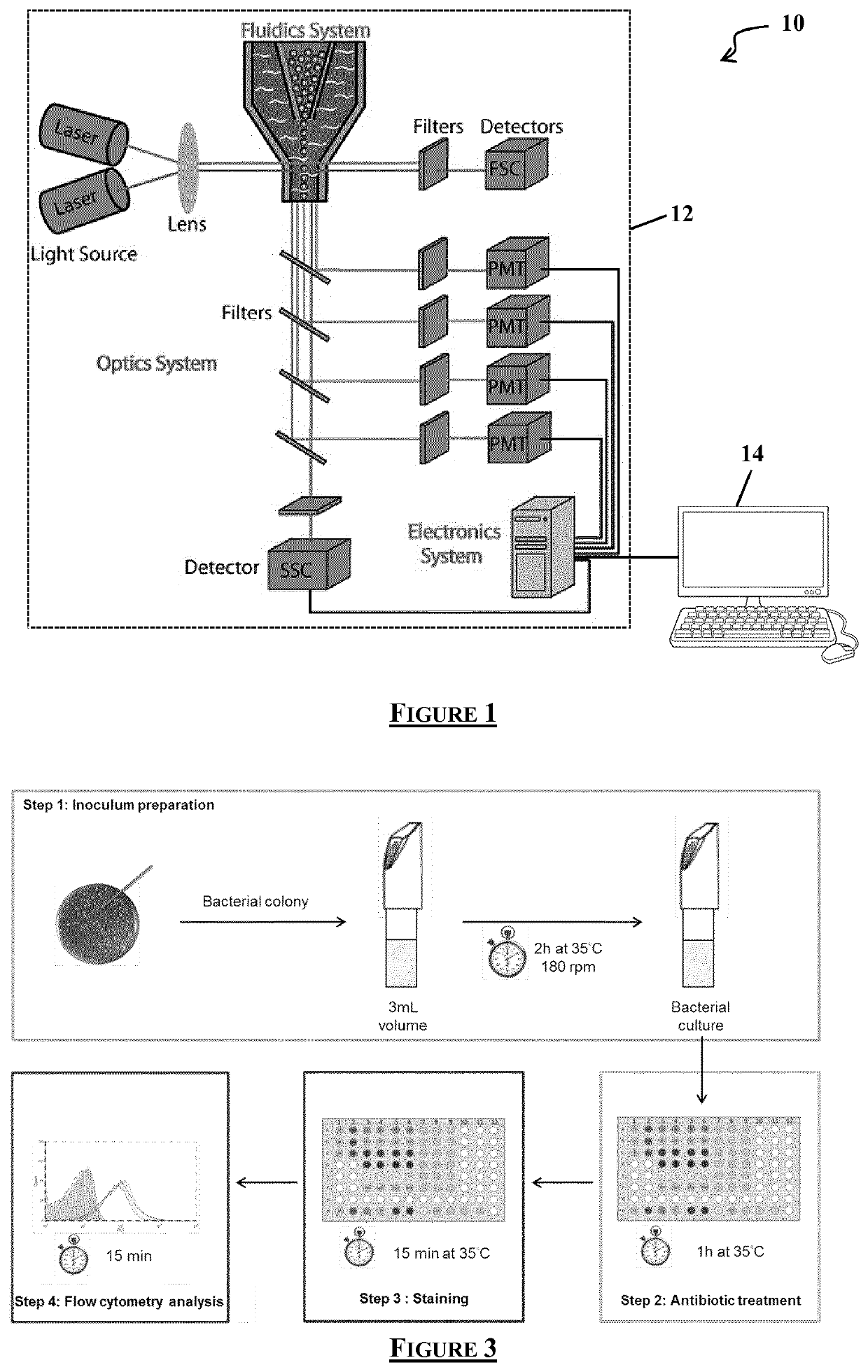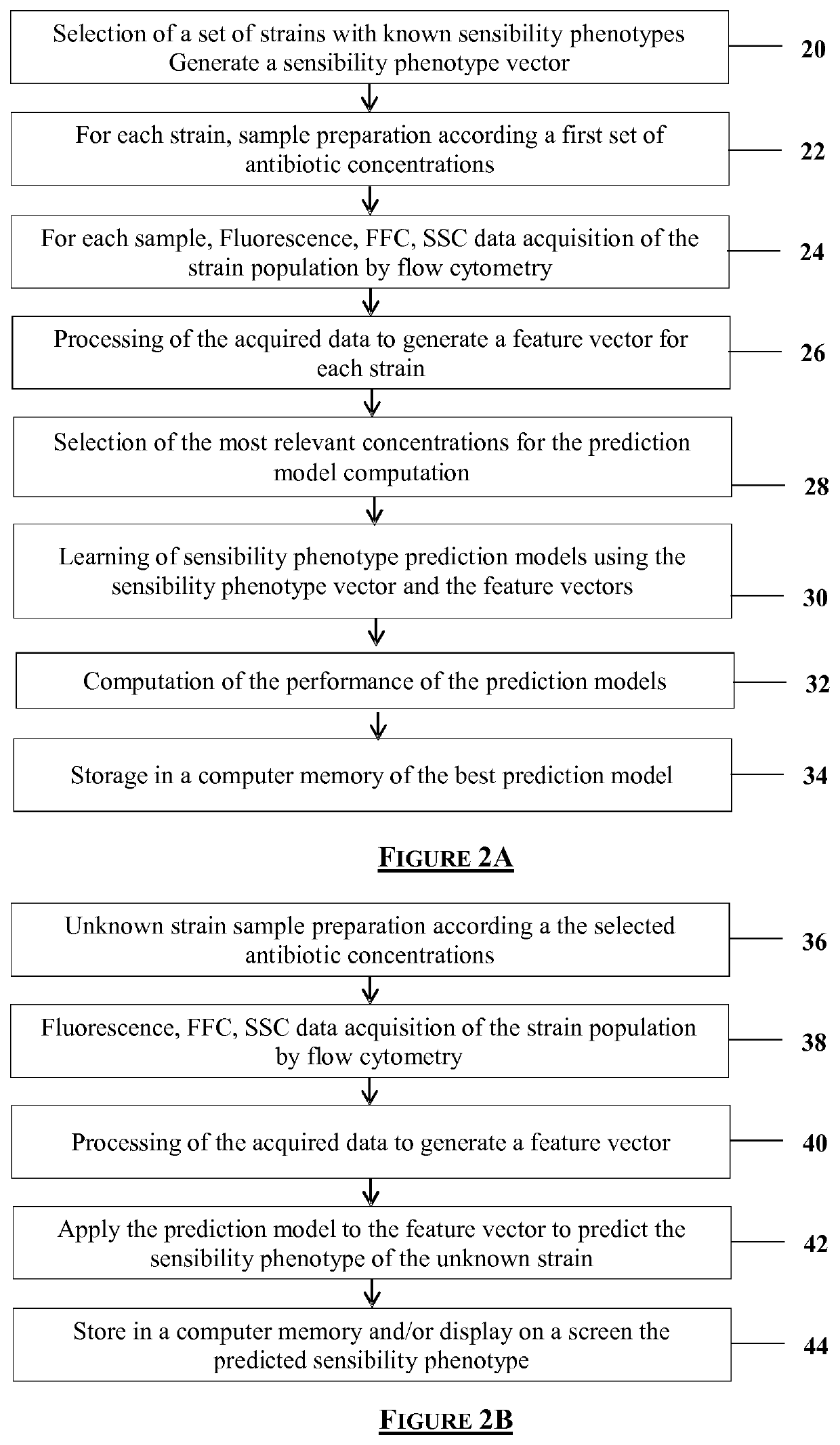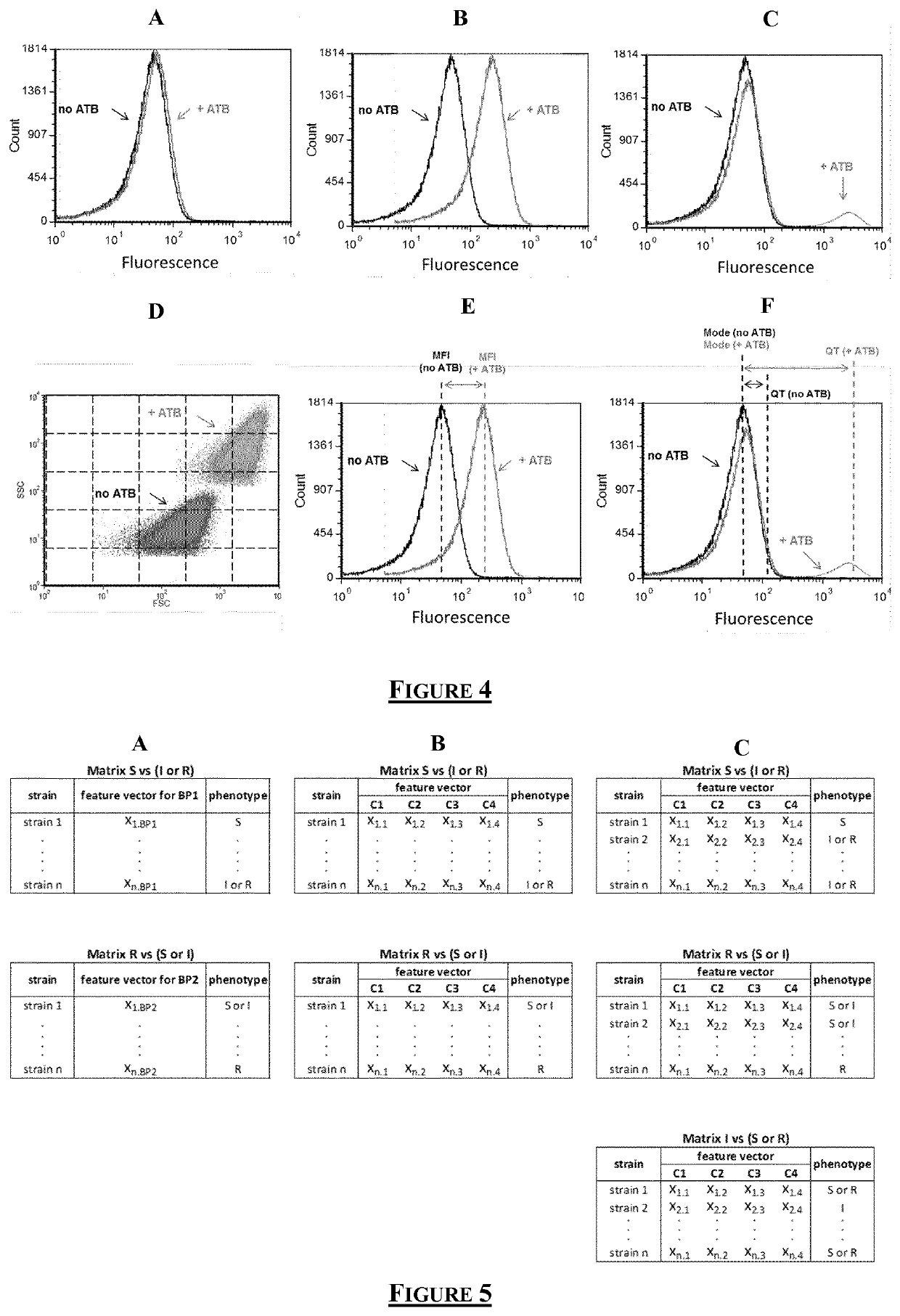Flow cytometry data processing for antimicrobial agent sensibility prediction
a flow cytometry and antimicrobial agent technology, applied in the field of microorganism prediction of antimicrobial agent sensibility, can solve the problem that the mfi method fails to robustly quantify the subtle effect of an antimicrobial agen
- Summary
- Abstract
- Description
- Claims
- Application Information
AI Technical Summary
Benefits of technology
Problems solved by technology
Method used
Image
Examples
experiment 1
A. Evaluation of Quantile-Based Prediction Models for Heterogeneous Fluorescence Distributions
[0166]A.i. Fluorescence Distribution Profiles of Gentamicin-Treated Strains
[0167]The experiment was performed as described in the following lines:[0168]A panel of 107 Enterobacteriaceae strains (FIG. 6: Distribution of the panel of strains according to their MICs for Gentamicin) were treated with 0, 2, 4 and 8 mg / L of Gentamicin following the protocol described in FIG. 3 and analyzed by FCM. Reference phenotypes of all strains were determined by broth microdilution method according to CLSI breakpoints;[0169]Fluorescence distribution were observed for all strains and classified based on their profiles;[0170]Prediction models were generated from FCM data and the performance was evaluated as described above.
[0171]FCM fluorescence distribution obtained from Gentamicin-treated samples showed 3 main profiles when compared to untreated samples (FIG. 7: Spectra from 3 susceptible strains which are...
experiment 2
B. In-Depth FCM Analysis and Selection of Prediction Models
[0184]B.i. Performance Evaluation of Discrimination Strategies
[0185]In this experiment, we have made an evaluation of wide range of prediction models for Ceftazidime:[0186]128 Enterobacteriaceae strains (FIG. 9: Distribution of the panel of strains according to their MICs for Ceftazidime) were treated or not with four different concentrations of Ceftazidime (1, 2, 4 and 8 mg / L) using the FCM protocol described in FIG. 3;[0187]FCM data were used to generate feature vectors as described above;[0188]For each strategy (BPS, GS and GMS), 7 type of prediction models were built based on the feature vectors generated (FIG. 10: Number of predictions models generated. “FL1” means fluorescence);[0189]The performance of all models were evaluated following cross validation as described above.
[0190]As shown in FIG. 10, 37 prediction models were generated for each discrimination strategy which makes a total number of 111 prediction models...
experiment 3
C. Selection of Relevant Antibiotic Concentrations
[0197]As shown in FIG. 12, the best prediction model for Ceftazidime is a 3D model that was built using the GS strategy. This model processes four concentrations of Ceftazidime (1, 2, 4 and 8 mg / L). In an effort to investigate the relevance of these concentrations in the discriminating potential of the 3D model, we have used the Lasso analytical tool to build a 3D model based on GS strategy as described above.
[0198]The 3D prediction model obtained using the Lasso tool showed relatively good performance with an error score slightly higher the score of the 3D model obtained with SVM analysis (FIG. 13: Performance comparison of 3D prediction models (GS) and VITEK 2. The confusion matrices show the correlation and discrepancies between the reference phenotype and the phenotypes predicted by the 3D models and VITEK® 2 from bioMérieux. The table at the bottom, shows the mean score values and the average number of prediction errors (mE, ME...
PUM
 Login to View More
Login to View More Abstract
Description
Claims
Application Information
 Login to View More
Login to View More - R&D
- Intellectual Property
- Life Sciences
- Materials
- Tech Scout
- Unparalleled Data Quality
- Higher Quality Content
- 60% Fewer Hallucinations
Browse by: Latest US Patents, China's latest patents, Technical Efficacy Thesaurus, Application Domain, Technology Topic, Popular Technical Reports.
© 2025 PatSnap. All rights reserved.Legal|Privacy policy|Modern Slavery Act Transparency Statement|Sitemap|About US| Contact US: help@patsnap.com



